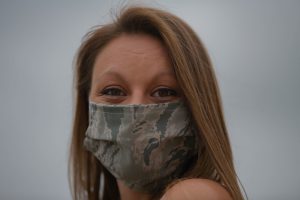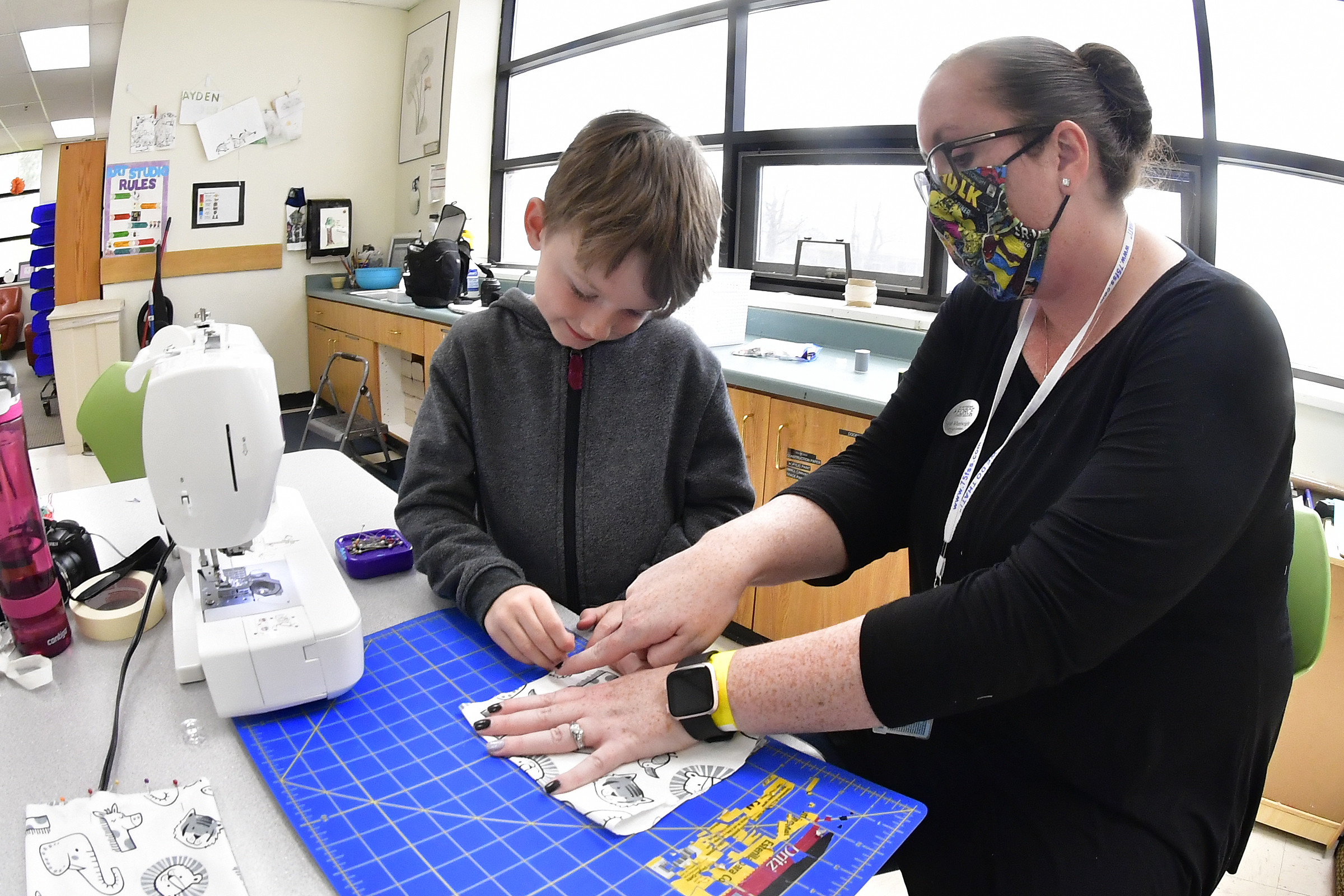Centers for Disease Control and Prevention recommends both healthy or sick people to always wear a face mask when they?re out in the public. Sometimes, it can be hard to stay six feet away from people at the pharmacies or grocery stores. This is why, face masks have become mandatory in order to maintain safety measures. If you haven?t bought an N95 face mask and they?re currently out of stock, we will give you an easy guide to making DIY coronavirus face mask. Check out this guide and make your own face mask today.
Table of Contents
Why do you need a coronavirus face mask?
Someone who is already infected with COVID-19?can cough or sneeze in front of you. Even when they talk, their droplets can come in contact with the air and spread the virus from one person to another. A coronavirus face mask will help prevent such a possibility of virus spread.
The DIY face mask you make will help you cover your nose and mouth. It will block the release of virus-filled droplets in the air when you sneeze or cough. Similarly, if someone is infected around you but you are protected by your mask, it will keep you away from having the virus.
Now, you might think that a DIY face mask made of cloth might not protect the virus from spreading. However, when you take preventive measures to minimize risks, it does help. Prevention is important at every level and the idea is to keep yourself and people around you protected.
Types of coronavirus face mask
Here are the different types of face masks that you might need to prevent yourself from COVID-19:
Masks for healthcare workers
Healthcare workers need to use surgical masks and N95 respirators and these products should be first set aside for them. There aren?t enough of these masks for every healthcare worker fighting the virus. It is essential to send these first to doctors, nurses, and medical staff who need these products the most.
N95 respirator masks must fit tightly around the face and cover the nose. These masks filter out 95% of the smallest particles present in the air. In order to be useful to you, they have to fit your face perfectly.
Surgical masks are usually light blue in color and supported by white strings. These fit loosely around the mouth and nose. These masks can also help shield large droplets coming out from someone who is sick and is sneezing or coughing. However, they?re too loose to protect you against every germ. Thus, surgical masks cannot protect you from the tiniest of particles that carry coronavirus.

Masks for non-health care workers
Cloth masks are ideal for people who don?t work in health care sectors. Keep these tips in mind when you create DIY face masks for coronavirus:
- You can sew fabric and tie it around the face or fold it around with hair ties to attach them to your ear loops
- You must use two layers of material for making your coronavirus face mask
- If you want you can add a pocket for a filter. Make sure you take it out before you wash the mask
- Use a copper ribbon or wire ribbon on the nose area of the mask to make it fit better
- The pleated masks are best as you can perfectly fit them to your face
Other masks
If you can?t DIY coronavirus face mask, check out some other types that might be available to serve the purpose:
- Look for dust masks at hardware stores. These masks look a lot similar to the N95 respirators but will not filter out as effectively as the latter.
- You can also buy neoprene masks that help stop droplets that might carry the virus
- Use a neck gaiter or a piece of material tied in a loop. It is made with stretchy synthetic fabric. You can fold it up into multiple layers in the fabric is thin.
How to DIY coronavirus face mask
The quickest way to make a face mask has been recommended by the CDC. To do this you need to:
- Use a square cloth material or a bandana that is around 20 inches on each side
- Fold it into half and then the top third down and bottom third up ? this will make a long rectangle
- Slide two rubber bands or hair ties through both the ends of the rectangle till they?re around six inches apart
- Fold the sides towards the middle and tuck the ends together
- Now hook the hair ties over the ears and adjust the cloth to snug against your nose and face. Make sure it?s not to tight and allows you to breathe.
Best fabrics to make a mask
Here are the types of materials you can use for making a DIY coronavirus face mask:
- Tea towels
- Cotton mix
- Vacuum cleaner bag
- Standard or antimicrobial pillowcase
- 100% cotton t-shirt
- Linen
- Scarf
How well you can breathe through a facemask can tell a lot about how much it prevents the disease from spreading. If you find it difficult to breathe and you have respiratory issues, it can be a huge problem for you.
Heavy breathing can also affect how well a facemask works. Despite high reviews and ratings, researchers said that vacuum cleaner bags are too thick and stiff to be used as masks and tea towels are hard to breathe through. You should rather use a pillowcase or a t-shirt material as they stretch.
As per research, ?quilter?s cotton? can filter out particles especially tight weaves with thicker threads like batik. The masks that have cotton on the outer layer and flannel on the inner layer works well too.
Face mask filters to use
Furnace filters at home with multiple layers can block small particulars as good as N95 respirators. However, these come with tiny fibers that can go into the lungs. If you cut a filter for using a mask, make sure you sandwich the filter material between the layers of cotton or the woven fabric you use. Also, you can cut a polypropylene shopping bag that comes with a soft fabric-like feel. (Modafinil) You just have to insert the material between layers of the mask and that will work. The product is washable but will need air-drying to last longer.
Where can you buy mask materials?
Mask material is probably present in your closet right now, you don?t have to buy them. You can use an old t-shirt or pillowcases to make these. If you don?t want to cut up fabric you already have, you can get them at a quilting store. You can also look online for the material if you don?t get real masks available. Search for local offerings on social media as well.
When do you have to wear a mask?
CDC suggests that everyone needs to wear face masks in public places, especially in places where it is difficult to keep six feet away from people. Children under two years old and people who have breathing problems should not use the mask.
You need to wear a mask if you?re sick and around people and pets. You need to wear the mask even when you?re at home. Caregivers must use the product when cleaning and disinfecting a patient?s room. Moreover, if you need to call 911 for an emergency, you need to wear a mask before medical help arrives.
Note that masks are an addition to COVID-19 safety steps but they don?t replace them. You still have to maintain social distancing, wash hands with soap often, and keep surfaces clean.
How to wear a mask?
Of course, you know how to install a face mask across your nose and mouth and tie it up by locking them behind your ears. But if order to wear a mask, you need to follow protocols that come before it. Wash hands with water and soap for 20 seconds. Make sure your mask doesn?t have holes and then wear it.
Secure your masks with ties behind the head if it doesn?t have loops. Make sure the face mask covers your nose and mouth. The mask should also go under your chin and it should not be the distance between the mask and the face. You need to pinch the top edge of the mask and around the bridge of the nose to make sure it is secure.
You need to fit the mask tightly around the face but make sure it feels comfortable. When you try to breathe through the mask, it shouldn?t be difficult. Don?t wear a mask if you find it too hard to breathe. Don?t touch your mask when you?re wearing it.
How to remove and clean a mask?
Take off your mask after you?ve worn it or once it gets damp. Don?t touch the front of the mask while removable as that?s where all the germs are. Take it off from the ear loops or the head ties.
Surgical masks are only for health care workers, but if you use them note that they need to be thrown after using once. Keep the mask in a plastic bag and throw it away. Make sure you wash your hands with soap.
If you have cloth masks, wash them with warm water and detergent. Wash them separately and not with other clothes. Once done, let them hang to dry and wash your hands once again when done.
DIY coronavirus face mask
Here are two easy ways to DIY coronavirus face mask:
Using an old t-shirt
An old t-shirt can be a perfect fix to help you make a mask right away.
What do you need?
- Clean t-shirt
- Scissors
- Kitchen towel
- Pins
Directions
- Draw patterns to make the mask across the arms and body of the t-shirt
- Cut the pattern to have two layers of both front and back
- Pin one side and add a paper towel to the other side
- Then pin the other side and wear the mask
- Tie it up at the back so it looks tight across the nose

No sew face mask
Making a mask from a bandana is pretty easy and quick.
What do you need?
- Bandana handkerchief that is at least 50 cm x 50 cm big
- Hair ties or elastic bands
- Measurement tape
Directions
- Lay the cloth on a surface and then fold it in half
- Fold the top third down and then fold the bottom up to meet it
- Add the elastic bands to through it and keep them near both the ends
- Create pressure in the middle and fold the ends to meet it
- Tie the elastic bands on your ears and find a thick mask covering your mouth and nose
Final thoughts
Homemade masks might not help you keep away from getting the disease. However, it does help you from passing it onto other people. If you have been seeing symptoms of COVID-19, you need to wear masks all the time, even inside your house. If you don?t have symptoms like high temperature, but you keep coughing then you need to stay at home and isolate yourself.
Note that along with these you have to follow the protocols given by the government to stay safe. You have to keep washing your hands, keeping yourself sanitized, and make sure you try and flatten the curve as much as possible. Try out these easy and quick ways to make a mask and stay safe. Make sure you wash them after usage if you have to repeat using them. These masks are cost-effective and you can make many of them for different prints.


